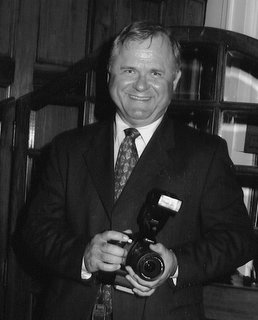SLR Film Photography Special Effect (Part 1) - Ghosting Effect



I know there are some photographers that still like to pick up that trusty ol' SLR, insert a roll of film and get out there and experiment in the field. Then approach with grinning anticipation as they pick up the developed film from their favorite photo shop and have the person behind the counter ask, “How did you take that picture? It's awesome!”
It is this photography 'purest' to whom I appeal (this time) – the ones that still like using film every now and then. Most photographers have Digital SLRs (DSLR - “et moi aussi”). I know you can create this effect with Photoshop, after the fact; but having creative control over this special effect makes it exciting because you execute this photo miracle at the precise moment you push the shutter button.
Ghosting. This is what this special effect is called; accomplished by using your SLR's multiple exposure feature, but with a simple twist to ensure proper film exposure. The procedure detailed in this article is different from the instructions in your SLR manual. Ghosting is perfect for pictures involving subjects in motion, taken when the camera and the background is stable (not moving) and the subjects move through, around, or across the frame. I have had great success using this effect when photographing people moving about an historic site or children as they scamper over rocks. I have also used this effect for weddings and sports shoots.
Example (see images above): In one wedding photograph, the groom stood still at the bottom of stone steps to an historic dwelling, his hand extended towards his bride, who slowly moved down the steps toward her groom. My six deliberate 'clicks' of the shutter created an airy, surreal picture of the wedding couple.
Depending on the speed of the moving subjects, the shutter can be held down in rapid fire mode or each exposure can be meticulously choreographed:
1) each subject deliberately positioned in the frame,
2) one 'click' of the shutter, and
3) repeat steps 1 and 2 to the total number of multiple exposures you set in your camera.
So what are the mechanics of this “through the lens” shot to achieve the ghosting effect?
1. Stabilize the camera – using a tripod is best, a stable surface is a second option or, a steady hand as a last resort;
2. Set number of multiple exposures you require for the frame to (N) – usually 1 to 9;
3. For the roll of film in your SLR, determine the film speed (S);
4. Reset the camera film speed (Yes, you can override the setting) to (N × S) or, if not an exact match, set it to the absolute closest speed ((N × S) ± adjustment);
5. Take your picture, depressing the shutter button for a total count equalling the number of camera exposures you set in step “2”.
Example:
1. You want 6 exposures on the frame (N=6) so set the number of multiple exposures to '6';
2. You've determined the film speed is 200 (S=200);
3. Reset the camera film speed to '1200' (= 200 × 6);
4. Depress the shutter button 6 times (for 6 exposures).
REMEMBER: Check and reset the SLR film speed and number of exposures to their original settings before continuing with your next shot. Some SLRs will automatically reset the number of exposures back to '1' before advancing the film to the next frame. It's always better to verify this.
There are no special instructions for developing your film. Normal developing at the rated film speed will ensure the picture is properly exposed and developed – simple and beautiful. This is photo art!
PS: you can use this same set-up for your SLR - but instead of using the tripod. just rotate your camera clockwise (or counter clockwise) as you snap each frame. Voila! now you have a swirl effect.


2 Comments:
Wonderful tips! Very helpful indeed. I am thinking of getting a new DSLR camera and I can't decide what to get between Nikon and Canon... Hoping to try out these tips! :) Thanks!
With photography, you zero in; you put a lot of energy into short moments, and then you go on to the next thing.
Post a Comment
<< Home